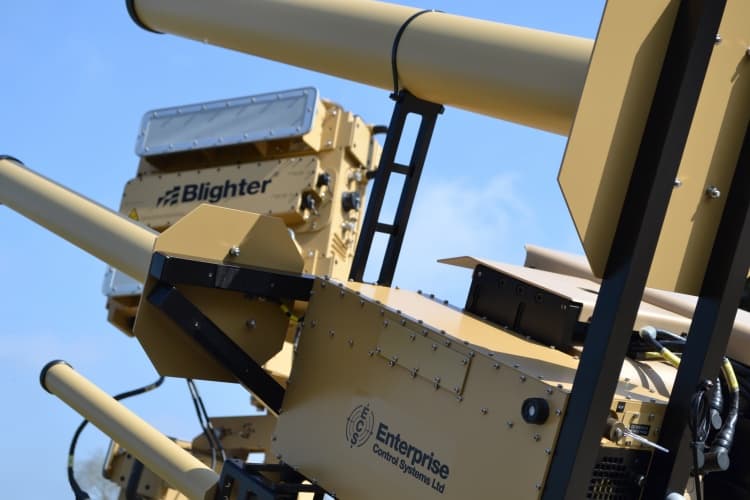Designed by three British firms - Blighter Surveillance Systems, Chess Dynamics and Enterprise Control Systems - the Anti-UAV Defence System (AUDS) has been developed in response to growing fears that drones could be used to mount terror attacks.

Launched at last month’s DSEI show in London, the system is able to detect a drone five miles (8 km) away using electronic scanning radar, track it using infrared and daylight cameras and specialist software before disrupting the flight using an inhibitor to block the radio signals that control it.
Key features of the system include a quad band inhibitor which enables the AUDS operator to disrupt the different licensed telemetry bands of commercial drones no matter where in the world they are designed and licensed for use.
The technology can also be used to disrupt the global satellite (GNSS) bands that UAV’s typically require access to in order to fly in an autonomous mode.
The system also boats a so-called “optical disruptor”, which the AUDS operator can use to disrupt the automatic gain control settings in the drone’s camera system so that the drone’s pilot loses visibility. This technology can also be used to provide a very precise identification of known UAV launch activity to any ground forces.
Mark Radford, CEO of Blighter Surveillance Systems said that the launch of the system follows extensive trials carried out across Europe and North America over the spring and summer. “We have so far carried out over 150 hours of live testing in government organised trials operating against more than 200 flown sorties of group 1 UAVs. Feedback from our own team and from customers was for a greater level of modularity to speed deployment and to minimise the need for multi person set-up teams. This has now been implemented in the production version – yet another example of our team’s fleet footedness.”
Commenting on the technology’s likely application areas Graham Beall, managing director of Chess Dynamics added: “It’s expected that unmanned aircraft systems (UAS) will be used increasingly for malicious purposes as they can carry cameras, weapons, toxic chemicals and explosives and are being used increasingly for terrorism, espionage and smuggling purposes. Our system has been developed to address this urgent operational requirement.”



Glasgow trial explores AR cues for autonomous road safety
They've ploughed into a few vulnerable road users in the past. Making that less likely will make it spectacularly easy to stop the traffic for...